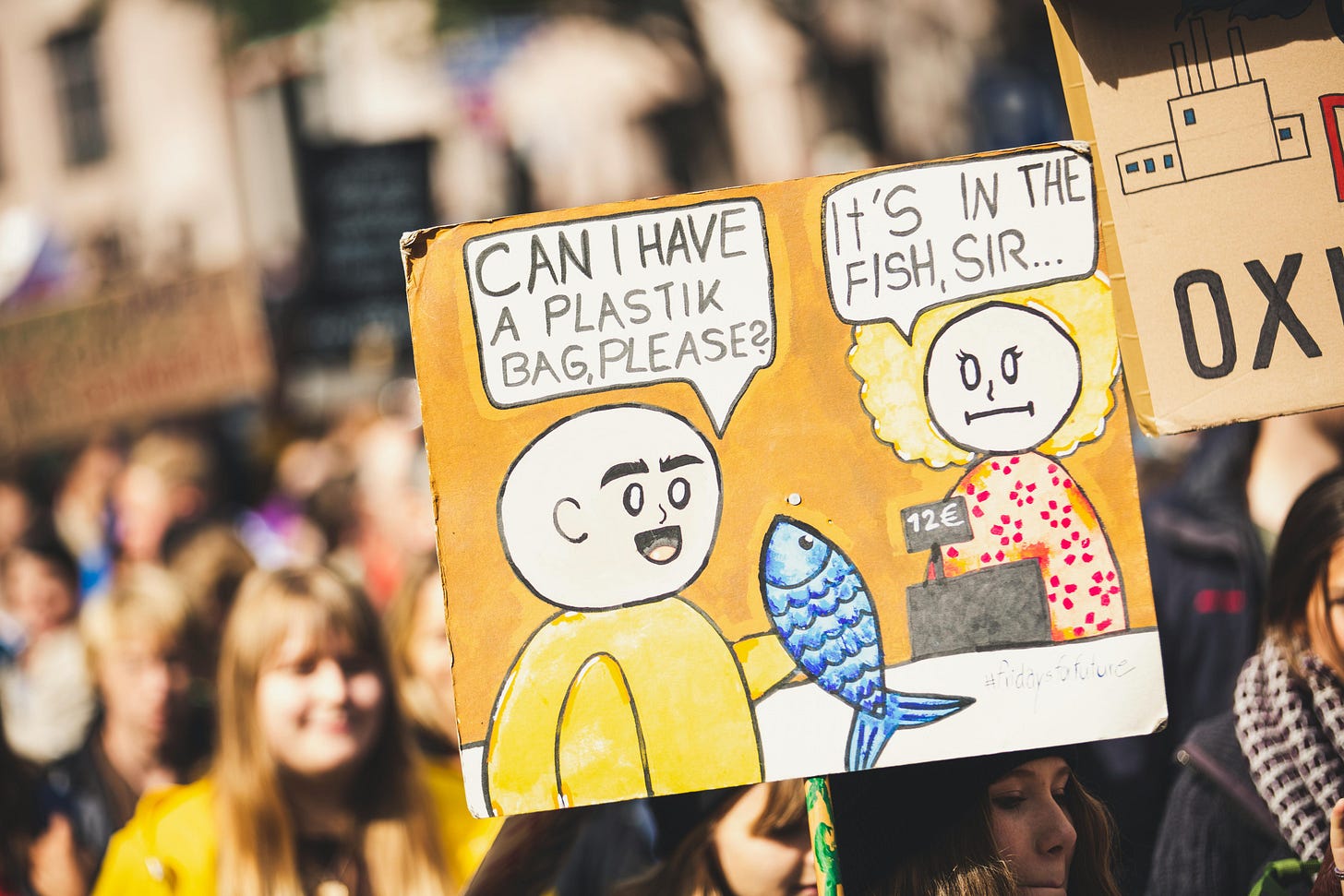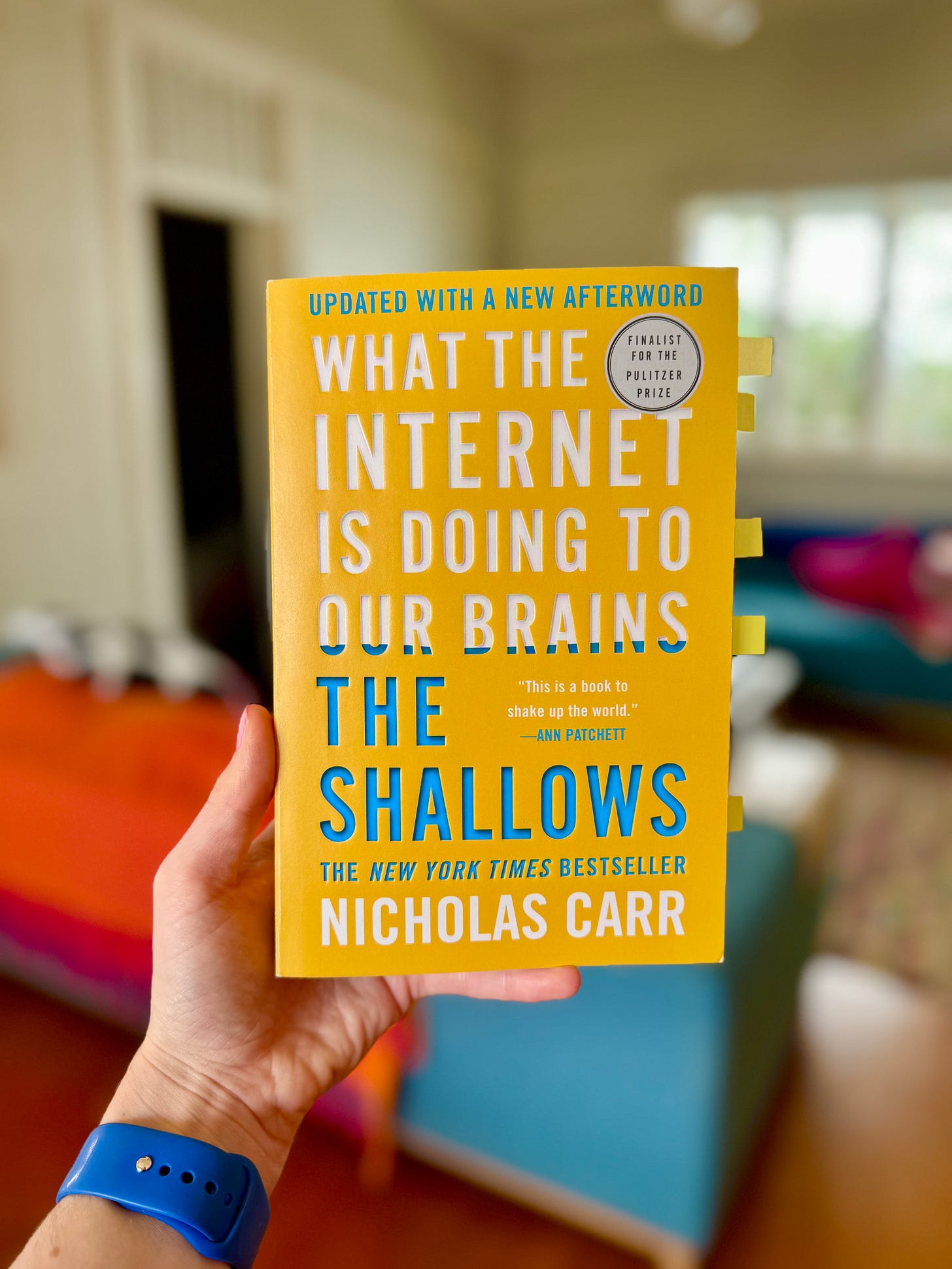The three-letter word that kills climate campaigns
What most failed campaigns have in common

There’s a sneaky little trap that many climate and progressive campaigns fall into — and it can be summed up in a simple, three-letter word.
It’s born out of genuine commitment and a sincere desire to do good. But when it comes to creating campaigns that actually land, this little word can be the kiss of death.
Can you guess what it is?
The word is and.
And??? I can hear you asking — how could an innocent little conjunction cause so much trouble?
When I talk about the word and, I’m talking about the reflex to expand a climate campaign until it’s carrying every issue and every solution at once. Climate communicators do need to recognise that climate change exists alongside a tangle of other global problems. I’ve written about this before.
But at the same time, we can’t expect a single campaign to solve all of the world’s problems. We can’t expect it to speak to everyone or ask people to do everything they can.
The enemy of the climate campaign is overreach. Spreading ourselves across everything is a highly effective way to achieve nothing at all.
In climate comms, I’ve lost count of the campaigns that blur environmental issues together until the message is a muddle. You’ll hear a voiceover warning about greenhouse gas emissions and a warming planet, while the screen cuts to oil-soaked seabirds and overflowing landfills. The latter are real problems in their own right, but lumping them in with global warming only clutters the signal.
Clutter breeds confusion. Instead of clear, direct steps, audiences are left with a swirl of outrage, guilt, and overwhelm — emotions that more often lead to paralysis than to action.
From where I sit, there are three main ways climate campaigns collapse under their own weight. The first is trying to cover too much ground — too many problems in one go, and too many purported outcomes.
Content: 99 problems, one campaign
The blame game — getting bogged down in too many problems
A lot of climate and progressive comms start from a place of justified outrage. They see the deep inequities and failures in the system and want to name them all. The result can be a laundry list of everything wrong with the world: the climate crisis, environmental racism, the housing crisis, extractive capitalism, biodiversity collapse, food insecurity, air pollution, water scarcity — sometimes all in the same two-minute video.
I do it too. It’s tempting to think that naming the whole web of injustice will give our audience a fuller picture, more reason to act. But the effect can be the opposite. In place of urgency, you get overwhelm.
Green growth and degrowth — are they really cure-alls?
Overreach is also woven into the way we pitch green growth and sustainable development — as if installing renewables and shutting down coal plants will *also* heal racial inequities, revitalise every struggling town, fix the food system, and end global poverty before lunch. Or that a carbon tax will ripple magically through the economy until every unrelated problem is solved. Or, on the flip side, that degrowth will somehow eliminate homelessness, restore every degraded ecosystem, and [insert utopian outcome here].
I’m all for the economic and social gains the transition can deliver. But those outcomes aren’t automatic, and they’re often inflated beyond recognition. If we keep promising them as if they’re inevitable, our message stops sounding visionary and starts sounding unhinged and disconnected from the real work ahead.
Audience: You talkin’ to me?
Another way climate campaigns overload themselves is by skipping the hard work of deciding exactly who they’re talking to. Instead, they default to a kind of broadcast mode designed for everyone, which in practice means no one in particular.
When the audience isn’t clearly defined, the message has to be smoothed out to appeal to all. Campaigns end up using vague, safe language instead of specific framing and relevant jargon that would help target audiences connect to it and feel like it’s created by people like them.
Effective campaigns commit to a target audience from the start. They speak in that audience’s language, address their priorities, and give them an action that feels relevant to their role in the problem. If other groups need to be reached, that’s what separate campaigns — or separate messages — are for. Far better to have multiple versions of a campaign going out to separate audiences than one version of a campaign designed to speak to all of them.
CTAs: What do you want me to do?
The third major way climate campaigns get in their own way is by overloading the call to action — or leaving it out entirely. A strong CTA is simple, specific, and achievable. It points to one thing the audience can do, right now, to make a tangible difference on the problem at hand.
But most campaigns I’ve seen go one of two ways:
No CTA at all, beyond a vague “we must act now.” (I despise content like this. If I read “the time to act is now” one more time…)
A shopping list of demands: call your MP, sign a petition, reduce your meat intake, join a march, switch banks, offset your flight, share the video.
When you give people too many options, they freeze. Decision fatigue sets in, urgency dissipates, and the likelihood of follow-through drops. The strongest campaigns resist the temptation to load up on asks. They aim for one clear step, aimed at one specific audience, to address one well-defined problem.
Everything-bagel liberalism
Here, we’re stepping into what Ezra Klein calls “everything-bagel liberalism” — the tendency for well-meaning progressive causes to get weighed down, and sometimes completely hobbled, by the impulse to fix too many things at once.
A community solar project wants to cut emissions, *and* employ veterans, *and* revitalise a local economy, *and* become a community garden to address food insecurity. All worthwhile goals in their own right — but rolled into one project, the focus blurs and progress stalls.
This is one of the key threads of Klein and Thompson’s Abundance agenda, which urges the US government to set clear priorities and stop getting in its own way.
Everything-bagel liberalism is both a symptom and a cause of the Left’s unique flavour of call-out/cancel culture. Progressives can be so wary of being criticised for overlooking something that they try to anticipate every possible objection and cover every potential blind spot. In the process, they lose the thread entirely.
This is a fatal flaw of the modern progressive movement. The intention is inclusion, but the effect is paralysis.
Will good intentions derail the climate movement?
The best thing about progressives is that they want to make everything better for everyone (except, maybe, the billionaires — they’ve had it good enough already). The worst thing about progressives is… that they want to make everything better for everyone.
To make change — and to get people on board — we have to be disciplined in our actions and specific in our messaging. One problem at a time. The right solutions in the right places.
That’s crucial for public communicators, but climate tech marketers should take note, too. If you’re targeting sustainability leads, these people may very well have entered their careers with a progressive agenda in mind, but in the day-to-day, they have a job to do, and you’re just one tool or service to help them get it done. Don’t try to help them save the world, or even their whole company — make your message as focused and practical as you can get away with.
What we’re curious about this week
📚 Book: The Shallows: What the Internet is Doing to Our Brains, by Nicholas Carr — an old book by modern standards, but one that seems to get more relevant with every passing year. When Carr first started questioning what computers might be doing to our brains back in prehistoric times (2010), most people didn’t have much time for it. Now, of course, the conversation has shifted — and Carr deserves a lot of the credit for that.
🎙️ Podcast: Hasan Minhaj and Tim Miller — The Republican Road to Hell — A very productive conversation between a funny man and an earnest one, with a whole lot of insight into modern politics.
What we’re working on
👉 Our own marketing: Meg and I constantly deal with the stereotypical marketing agency conundrum: we’re so busy doing other people’s marketing, we can’t find time for our own. This week, that’s what we’ve been up to. It’s time for a little TLC for The Climate Hub!
Ways we can help 🫶
🎯 Need help building an organic lead-generating machine? → See our lead gen services
📥 Want to know what’s trending in the world of sustainability reporting? → Download our free PDF: 2025 State of Sustainability Reporting
📣 Share this with your climate tech marketing team




I feel like I could have written this (maybe not as well). So important and bang on.
I’m working on toolkits to help people communicate climate action across political divides - want to collaborate?
https://drawntoreason.com/toolkits/